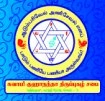

திரு அருணகிரிநாதர் அருளிய
திருப்புகழ்
Sri AruNagirinAthar's
Thiruppugazh

 |  திரு அருணகிரிநாதர் அருளிய Sri AruNagirinAthar's |  |
|---|
| (இந்த வலைத்தளத்தைப் பயன்படுத்துவதற்கு முன்பு எனது முக்கியக் குறிப்பைப் படியுங்கள் - நன்றி). (Please read my important note before using this website - Thank You). |
| திருப்புகழ் 1240 சாங்கரி பாடியிட (பொதுப்பாடல்கள்) Thiruppugazh 1240 sAngkaripAdiyida (common) |
 |  | தமிழிலும் ஆங்கிலத்திலும் பொருள் எழுதியது ஸ்ரீ கோபால சுந்தரம் Meanings in Tamil and English by Sri Gopala Sundaram | English PDF அமைப்பு in PDF | ஆலய வரிசை அகரவரிசை எண்வரிசை தேடல் venue list alphabetical numerical search |
|
தாந்தன தானதன தாந்தன தானதன தாந்தன தானதன ...... தனதான ......... பாடல் ......... சாங்கரி பாடியிட வோங்கிய ஞானசுக தாண்டவ மாடியவர் ...... வடிவான சாந்தம தீதமுணர் கூந்தம சாதியவர் தாங்களு ஞானமுற ...... வடியேனுந் தூங்கிய பார்வையொடு தாங்கிய வாயுவொடு தோன்றிய சோதியொடு ...... சிவயோகந் தூண்டிய சீவனொடு வேண்டிய காலமொடு சோம்பினில் வாழும்வகை ...... அருளாதோ வாங்குகை யானையென வீன்குலை வாழைவளர் வான்பொழில் சூழும்வய ...... லயலேறி மாங்கனி தேனொழுக வேங்கையில் மேலரிகள் மாந்திய வாரணிய ...... மலைமீதிற் பூங்கொடி போலுமிடை யேங்கிட வாரமணி பூண்பன பாரியன ...... தனபாரப் பூங்குற மாதினுட னாங்குற வாடியிருள் பூம்பொழில் மேவிவளர் ...... பெருமாளே. ......... சொல் விளக்கம் ......... சாங்கரி பாடியிட ... சங்கரியாகிய பார்வதி தேவி பாடித் தாளம் இட, ஓங்கிய ஞானசுகதாண்டவ மாடியவர் ... மேம்பட்ட ஞான ஆனந்தத் தாண்டவம் ஆடிய சிவபிரானின் வடிவான ... வடிவை அடைந்தவர்களும், சாந்தம் அதீதம் உணர் கூந்தம சாதியவர் தாங்களு ... சாந்த குணத்தின் உச்சி நிலையில் இருந்து, உணர்ச்சி மிகுந்த சிவநேச இனத்தவர்களான பெரியோர்களும், ஞானமுற அடியேனும் ... (அந்தச் சிவ நடனத்தைப் பார்த்ததால்) ஞான நிலையை அடைய, அடியேனும் தூங்கிய பார்வையொடு தாங்கிய வாயுவொடு ... அறி துயில் கொண்ட ஞானக் கண்ணுடனும், வெளியில் விடாதபடி உள்ளேயே சுழுமுனையில் தாங்கிப் பிடித்த பிராணவாயுவுடனும்*, தோன்றிய சோதியொடு ... அந்நிலையில் காணப்படும் ஜோதி தரிசனத்துடனும், சிவயோகந் தூண்டிய சீவனொடு ... சிவயோக நிலையில் பரசிவத்துடன் கூடி நிலைத்த ஆன்மாவுடன், வேண்டிய காலமொடு ... விரும்பிய கால அளவுக்கு சோம்பினில் வாழும்வகை அருளாதோ ... சும்மா இருக்கும் மெளனஞான நிலையில் வாழும் பாக்கியத்தை உனது திருவருள் எனக்கு அருளாதோ? வாங்குகை யானையென ஈன்குலை வாழைவளர் ... யானையின் தொங்கும் துதிக்கையைப் போல வாழைக் குலைகளைத் தள்ளுகின்ற வாழைமரங்கள் வளர்கின்ற, வான்பொழில் சூழும்வயல் அயலேறி ... பெரிய சோலைகள் சூழ்ந்த வயல்களின் பக்கங்களில் ஏறி மாங்கனி தேனொழுக வேங்கையில் மேல் அரிகள் ... மாம்பழங்கள் தேன் ஒழுகும்படி வேங்கை மரத்தின் மேலிருந்து பாயும் குரங்குகள் மாந்திய ஆரணிய மலைமீதில் ... தேனையும் பழத்தையும் அருந்திய காடுகளைக் கொண்ட வள்ளிமலையில், பூங்கொடி போலும் இடை யேங்கிட ... பூங்கொடி போன்றுள்ள நுண்ணிய இடுப்பு சோரும்படி ஆரமணி பூண்பன பாரியன தனபாரப் பூங்குற மாதினுடன் ... அணிந்துள்ள முத்தாபரணங்களின் கனமும், மார்பின் பாரமும் உடைய அழகிய குறப்பெண் வள்ளியுடன் ஆங்குறவாடி ... அங்கே நேசம் பூண்டு கலந்து விளையாடி, இருள் பூம்பொழில் மேவிவளர் பெருமாளே. ... அடர்ந்து இருண்ட சோலையிலே விரும்பி அமர்ந்த பெருமாளே. |
* இங்கு சிவயோக முறைகள் விளக்கப்பட்டுள்ளன. அதன் சுருக்கம் வருமாறு: நாம் உள்ளுக்கு இழுக்கும் காற்றுக்குப் 'பூரகம்' என்றும், வெளிவிடும் காற்றுக்கு 'ரேசகம்' என்றும் பெயர். உள்ளே நிறுத்திவைக்கப்படும் காற்றுக்கு 'கும்பகம்' என்று பெயர். உட் கொள்ளும் பிராணவாயு உடலில் குறிப்பிட்ட 'ஆதாரங்கள்' (நிலைகள், சக்கரங்கள்) மூலமாகப் படிப்படியாகப் பரவி, மேல் நோக்கிச் சென்று, தலையில் 'பிரம கபால'த்தில் உள்ள 'ஸஹஸ்ராரம்' (பிந்து சக்கரம்) என்ற சக்கரத்துக்குச் செல்லும். இந்த ஐக்கியம் ஏற்படும்போது, அமுத சக்தி பிறந்து, ஆறு ஆதாரங்களுக்கும் ஊட்டப்பட்டு, மீண்டும் அதே வழியில் 'மூலாதார'த்தை வந்து அடையும். இந்த ஆதாரங்களை ஒழுங்கு படுத்தும் வகையில் மூன்று 'மண்டல'ங்களும் (அக்கினி, ஆதித்த, சந்திர மண்டலங்கள்), பத்து 'நாடி'களும் (இடைகலை, பிங்கலை, சுழுமுனை முதலியன) உள்ளன. 'இடைகலை' பத்து நாடிகளுள் ஒன்று. இடது நாசியால் விடும் சுவாசம். 'பிங்கலை' பத்து நாடிகளுள் ஒன்று. வலது நாசி வழியால் விடும் சுவாசம். 'சுழு முனை' இடைகலைக்கும் பிங்கலைக்கும் இடையில் உள்ளது. 'சுழு முனை' ஆதாரம் ஆறிலும் ஊடுருவி நிற்பது. 'இடைகலை'யும், 'பிங்கலை'யும் ஒன்றுக்கொன்று பின்னி நிற்பன. சுவாச நடப்பை 'ப்ராணாயாமம்' என்ற யோக வன்மையால் கட்டுப்படுத்தினால் மன அமைதி ஏற்படும். |
| 'wikisource' reference links for this song இப்பாடலுக்கான 'விக்கிமூலம்' இணையப் பக்கங்கள் pg 3.574 pg 3.575 pg 3.576 pg 3.577 WIKI_urai Song number: 1239 goto wiki alpha list (Please note: Kaumaram.com is NOT responsible for accuracy and contents of external links) |
 | 'குருஜி' ராகவன் அவர்களுடன் திருப்புகழ் அன்பர்கள் 'Guruji' Ragavan and Thiruppugazh Anbargal பாடகர் பக்கத்திற்கு to singer's page |
|
 | ஸ்ரீ மஹா பெரியவா திருப்புகழ் சபை & சுவாமி குஹாநந்தா திருப்புகழ் சபை (சேலம்) Sri Maha Periyava Thirupugazh Sabha & Swamy Gughanandha Thirupugazh Sabha (Salem) |  பாடகர் பக்கத்திற்கு பாடகர் பக்கத்திற்கு to singer's page |
 | சுவாமி குஹாநந்தா திருப்புகழ் சபை (சேலம்) இப்பாடலின் பொருள் Swamy Gughanandha Thirupugazh Sabha (Salem) meanings in Tamil |  |
 | திரு சபா. மெய்யப்பன் Thiru S. Meyyappan பாடகர் பக்கத்திற்கு to singer's page |
|
 | M.S. பாலஷ்ரவண்லக்ஷ்மி புதுச்சேரி M.S. Balashravanlakshmi Puducherry பாடகர் பக்கத்திற்கு to singer's page |
|
(Please note: Kaumaram.com is NOT responsible for accuracy and contents of external links) top |
|
Song 1240 - sAngkari pAdiyida (common) sAngkari pAdiyida vOngkiya nyAna suka thANdava mAdiyavar ...... vadivAna sAntham atheetham uNar kUnthama jAdhiyavar thAngaLu nyAnamuRa ...... adiyEnum thUngiya pArvaiyodu thAngiya vAyuvodu thOndriya jOthiyodu ...... sivayOgam thUNdiya jeevanodu vENdiya kAlamodu sOmbinil vAzhum vagai ...... aruLAdhO vAngukai yAnaiyena veenkulai vAzhai vaLar vAnpozhil sUzhum vayal ...... ayalERi mAnkani thEnozhuga vEngaiyil mElarigaL mAndhiya AraNiya ...... malaimeedhil pUnkodi pOlum idai Engida vAramaNi pUNbana pAriyana ...... thanabArap pUnkuRa mAdhinudan AnguRavAdi iruL pUmpozhil mEvi vaLar ...... perumALE. ......... Meaning ......... sAngkari pAdiyida vOngkiya nyAna suka thANdava mAdiyavar vadivAna: These great men resemble* SivA who performed the cosmic dance with exalted bliss of wisdom to the music and beats of Sankari (PArvathi). sAntham atheetham uNar kUnthama jAdhiyavar: These people have transcended the ultimate state of tranquility and are endowed with sharp acumen; they belong to the inner circle of SivA. thAngaLu nyAnamuRa: Along with these blessed ones experiencing siva-gnAna, adiyEnum thUngiya pArvaiyodu thAngiya vAyuvodu: I too would like to have my eyes half-closed in a trance with my breath held in suspension* thOndriya jOthiyodu sivayOgam thUNdiya jeevanodu: while the radiant effulgence induces my soul to merge with SivA; vENdiya kAlamodu sOmbinil vAzhum vagai aruLAdhO: and to remain in that state of sublime silence as long as I wish; will You not kindly bless me accordingly? vAngukai yAnaiyena veenkulai vAzhai vaLar: The bunches of plantains are huge as the elephant's hanging trunk; vAnpozhil sUzhum vayal ayalERi: these trees are amidst paddy fields surrounded by large groves; climbing from the sides of the field, mAnkani thEnozhuga vEngaiyil mElarigaL: the monkeys jump about from neem trees causing juice to ooze from the ripe mangoes, sweet like honey; mAndhiya AraNiya malaimeedhil: the monkeys devour the mangoes in the forests of Mount VaLLimalai. pUnkodi pOlum idai Engida vAramaNi: Here lived VaLLi, with creeper-like waist that could not bear the weight of pUNbana pAriyana thanabArap: her ornaments and her large bosoms; pUnkuRa mAdhinudan AnguRavAdi: with that beautiful damsel of the KuRavAs, You had a merry relationship iruL pUmpozhil mEvi vaLar perumALE.: in the dark and lovely groves where You reside happily, Oh Great One! |
* In this song, several Siva-yOgA principles are explained: The inhaled air is known as 'pUragam' and the exhaled air is 'rechagam'. The retained air is 'kumbagam'. The oxygen that enters the body climbs up step by step through several centres, known as 'chakrAs' and ultimately reaches 'sahasrAram' or 'bindhuchakram' on the top of the skull. At that point of union, nectar flows from that chakrA and seeps through and soaks the six centres of the body and returns to the basic chakrA, 'mUlAthAram'. Three zones (namely, the sun zone, the moon zone and the fire zone) and ten nerves ('nAdis') govern the six centres; the principal nerves are 'susumna', 'idaikala' and 'pingala'. idakala: one of the ten 'nAdis' (nerves), when inhalation takes place through the left nostril; pingala: one of the ten 'nAdis' (nerves), when inhalation takes place through the right nostril; susumna: one of the ten 'nAdis' (nerves), situated between the above two 'nadis', and running through the spinal chord covering all the six centres of 'kundalini'. ('idakala' and 'pingala' are entwined around 'susumna'). If breathing is controlled through a yOgA called 'praNAyAmA', the mind becomes tranquil. |
| தமிழில் PDF அமைப்பு ஆலய வரிசை அகரவரிசை எண்வரிசை |
| ... https://kaumaram.com ... The website for Lord Murugan and His Devotees முகப்பு அட்டவணை மேலே home contents top |
Kaumaram.com is a non-commercial website. This website is a dedication of Love for Lord Murugan. PLEASE do not ask me for songs about other deities or for BOOKS - This is NOT a bookshop - sorry. Please take note that Kaumaram.com DOES NOT solicit any funding, DIRECTLY or INDIRECTLY. © Copyright Kaumaram dot com - 2001-2040 COMMERCIAL USE OF MATERIAL IN THIS WEBSITE IS NOT PERMITTED. Please contact me (the webmaster), if you wish to place a link in your website. email: kaumaram@gmail.com Disclaimer: Although necessary efforts have been taken by me (the webmaster), to keep the items in https://kaumaram.com safe from viruses etc., I am NOT responsible for any damage caused by use of and/or downloading of any item from this website or from linked external sites. Please use updated ANTI-VIRUS program to rescan all downloaded items from the internet for maximum safety and security. மேலே top |